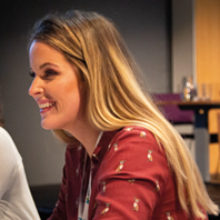Careers Focus: Putting together your CV
Issue: Metabolism, Health and Disease
07 May 2019 article

During the Annual Conference 2019, we hosted a CV workshop in collaboration with Miriam Windsor, Pirbright Institute, UK. During the session we covered the purpose of CVs (also known as résumés), cover letters which almost always accompany them and what to include to help you get the job. Some of the points that came up during the session are in this article.
For a non-academic CV, there is no perfect, one-size-fits-all CV – there are many ways to structure them and you will find that people will give you slightly different advice. As a scientist, you should work on conveying the transferrable skills you have gained while conducting your research.
Some common components of a standard, chronological CV are:
- Personal details – to tell readers who you are and how to contact you. You should title your CV with your name (not ‘Curriculum Vitae’!) and you could include your LinkedIn URL here too, as long as it’s kept up to date. It’s not customary to include a photo or information about gender, age or nationality on CVs in the UK.
- Education – with the most recent listed first. Don’t include every single school qualification you’ve had and remember to only include brief details of research degrees, as long as it’s appropriate to the potential employer.
- Employment – again, most recent first. You may wish to itemise relevant achievements, skills and responsibilities for each role you’ve had.
- Competencies – what are you good at? What can you bring to the role? This includes transferrable skills such as project management, analysing data and written and oral communication skills.
- Training and professional development – have you had any training that is relevant to the role you’re applying for?
- References – don’t forget to check before including up to two people as referees.
- Other things to make sure you include are details to set you apart. This can include positions of responsibility, for example where you’ve taken up extra activities that lead to the development of leadership skills. It’s customary to also include a section on your interests, but try to keep this relevant to the job. Many people include a personal statement on their CV – but keep this brief if you do.
It is clear from the above that it’s important to tailor your CV to the role for which you’re applying. When confronted by a CV that makes no effort to showcase how the applicant is right for the job, it’s unlikely a recruiter will spend time on it. Make sure to use the cover letter too; although some online application portals make these optional, we suggest you always use this opportunity to shine and tell them just how you fit the person specification.
Like any piece you’ve written, your CV should have a clear objective. In this case, to communicate to an employer just how great you’ll be at the job. Make sure you think about your language and audience. CVs and covering letters take a lot of careful time and attention, and lots of reviewing is required too to make sure you are making your point accurately. Don’t forget to keep it up to date so that you don’t have to start from the beginning again next time! We have focused on chronological CVs here. For more information on specific items to include in academic CVs, please see the Vitae website.
